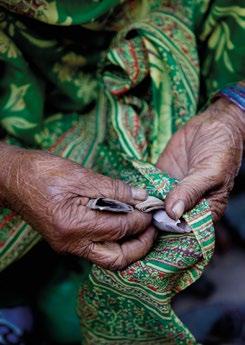
2 minute read
TO INCREASE WOMEN’S FINANCIAL INCLUSION AND CLOSE THE WOMEN’S SME CREDIT GAP IN RWANDA THROUGH ENABLING FINANCIAL POLICY AND REGULATION
from Increasing Women’s Financial Inclusion and Closing the Women’s SME Credit Gap In Rwanda Through Enab
Electronic Data Warehouse162
An electronic data warehouse (EDW) is an automated data collection and analysis system, where data from FSPs is regularly and automatically updated. It centralizes SDD by product (credit, savings, etc.163), and accounts opened; it also includes data by industry, SME or corporate-owned. It covers more than 600 regulated stakeholders, including banks; insurance companies, pension funds, microfinance institutions, SACCOs, telcos, money transfer operators, and private credit reference bureaus.
Advertisement
scheme through the set-up of supply-side data collection.
Business Development Fund For Women
Bridging the Gender Gap: Promoting Women’s Financial Inclusion

> View here
FINSCOPE’S DEMAND-SIDE SURVEYS
The groundwork for FinScope’s demand-side surveys was laid in 2008, with the surveys themselves conducted in 2012, 2016 and 2020. The data findings have been critical in driving financial inclusion policy in Rwanda.164 The 2008 survey enabled the government to develop a policy on Umurenge SACCOs to reach sectors with little access to formal financial institutions, making it more convenient for women and WSMEs to access financial services. In 2012, financial inclusion doubled to 42 percent, an increase that was attributed to the SACCOs policy.165 SACCOs are still important drivers of women’s financial inclusion as about 32 percent of women in Rwanda are members of Umurenge SACCOs as at 2020.166
Women are a good target. When you give a loan, they repay well. When you finance a woman, you finance the whole family.
Key informant, BRAC Rwanda
Insights from demand-side data led to increased interest from BNR in supply-side data in order to build the case for FSPs to target women and WSMEs. In 2017, BNR modernized its data collection and publication
Through the analysis of SDD, BNR has developed initiatives such as a Women’s Guarantee Fund (WGF) by establishing the Business Development Fund (BDF) in 2011.167 This was in order to support women-led MSMEs which had no guarantees or credit history.168 BDF provides supplementary collateral for the borrower to fulfil the lender’s required collateral coverage ratio. In this facility, eligible women and youth are provided with up to 75 percent of the required collateral. As of September 2021, there were 16,078 women-led businesses in the WGF portfolio, with 5,516 backed by the Agriculture and SMEs Guarantee Fund. WGF represented 36 percent of BDF’s portfolio.169
162 Kamali, W. Randall, D. 2017. “Leveraging ‘suptech’ for financial inclusion in Rwanda.” June 8. World Bank Blogs. Washington. Available at: https://blogs.worldbank.org/psd/leveraging-suptech-financialinclusion-rwanda
163 Alliance for Financial Inclusion (AFI). 2017. “Bridging the gender gap: promoting women’s financial inclusion.” August. Kuala Lumpur. AFI. Available at: https://www.afi-global.org/wp-content/uploads/ publications/2017-11/AFI2017_Gender_full_AW_ISBN_digital.pdf
164 Oula, S. Carey, E. Kayibanda, R. 2019. Case Study: Data Driving Women’s Financial Inclusion: Rwanda's experience. September. Women’s Financial Inclusion Data Partnership (WFID) Available at: https://data2x.org/wp-content/uploads/2019/09/WFID-Rwanda-CaseStudy-v14-digital.pdf
165 Access to Finance Rwanda. 2012. Rwanda FinScope Survey Report 2008-2012. October. Kigali. Available at: http://statistics.gov.rw/ publication/finscope-survey-report-2012
166 Access to Finance Rwanda. 2021. Gender and financial inclusion in Rwanda – FinScope 2020 thematic report. March. Kigali. AFR. Available at: https://afr.rw/wp-content/uploads/2021/03/FinScope-Rwanda2020-Gender-Report-Final.pdf
167 Business Development Fund website. Available at: https://www.bdf. rw/bdf-profile/
168 Ministry of Gender and Family Promotion (MIGEPROF). 2016. Final report of the strategy on women and youth access to finance (20162020). June. Kigali. MIGEPROF. Available at: http://197.243.22.137/ migeprof/fileadmin/user_upload/Women_and_Youth_Access_to_ Finance_Strategy.pdf
169 Business Development Fund (BDF). 2021. Data provided by the National Bank of Rwanda (BNR).







